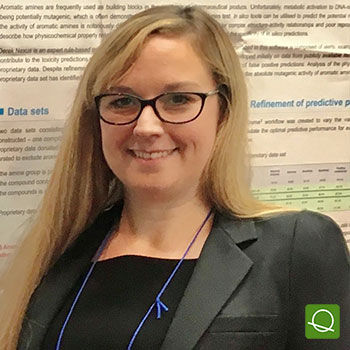
Rachael Tennant
Rachael completed her undergraduate degree in chemistry in 2009 at the University of Leeds under the supervision of Dr Richard Foster, and remained there to complete a masters degree in chemical biology, followed by a PhD which focused on the design, chemical synthesis and biological screening of fenretinide analogues as a therapeutic for the childhood cancer, Ewing’s sarcoma.
Upon completion of her PhD, Rachael joined Lhasa in 2015 where her work has primarily focused on the development of expert knowledge-based toxicity alerts for multiple toxicological endpoints, including mutagenicity, chromosome damage, skin sensitisation and carcinogenicity. Since 2017, Rachael has taken leadership of knowledge development for Derek Nexus, working closely with members and regulators to develop new knowledge and robust in silico predictions from both public and proprietary data. Rachael is also the lead scientist for Lhasa’s ICHM7 solution, and over the last 18 months has been heavily involved in collaborations that aim to address the ongoing challenges of nitrosamine impurities in APIs.

